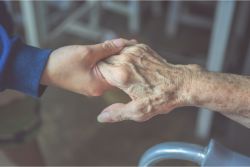Social alarm systems in group living environments
Published date: |
|
Modified date: |
|

For many adults in later life, balancing the need for safety and security with the desire for continued independence is a great concern.
Specialized group living accommodation can allow older or disabled people the freedom and privacy of their own home with communal areas for socializing and added security services.
Homes are generally fitted with social alarm systems, which enable residents, many of whom live alone, to contact telecare or telehealth providers to seek assistance. Such alarms can be life-saving.
However, systems vary, potentially causing compatibility issues with other home systems such as fire alarms.
BS 8604‑1:2019, Social alarm systems — Part 1: Design, installation and maintenance of social alarm systems in specialized grouped living environments — Code of practice, is a new standard from BSI that addresses this growing sector.
It sets out guidelines to ensure that social alarms are designed and installed correctly and can be integrated with other systems, giving vulnerable people and their carers peace of mind.
Specialized group living – an overview
In mid-2016, there were 1.6 million people in the UK aged 85 and over. By 2041, there will be 3.2 million.[1]
As the UK's population ages, public and private sector housing providers are exploring new ways to accommodate frail, vulnerable or disabled people who do not require nursing care. The demand for such accommodation has been described as a '£100bn market opportunity'.[2]
Provision varies hugely but includes retirement living or sheltered housing, where people live in separate homes with some shared facilities plus a warden and alarm system, and 'extra care' environments, where more facilities are communal and services such as meals and some social care might be provided. Often, several types are included in one retirement living development.
People with physical or learning disabilities and children in local authority care might also benefit from communal living adapted to their own needs.
Social alarms – an overview
There are believed to be around 20,000 social alarm systems installed in the UK. They are a key component to specialized group accommodation. As well as reassuring residents, they can reduce the strain on healthcare services.
Typically, base units incorporating a speaker and microphone are installed in each person's home, with a wireless connection to devices such as a personal pendant, a smoke detector and a fall detector.
Those base units are then connected to a central controller, where alarms are distributed either to a site manager or to an alarm receiving centre (ARC).
Social alarm systems must also be integrated with building fire alarms, door access systems, personal security systems and lift alarms. Each of these might be controlled by different external organizations.
The new standard therefore sets out guidelines for the design, installation and operation of social alarm systems to ensure compatibility.
Designing a new social alarm system
Design must begin with a detailed risk assessment. As stated in the standard: 'The fact that a social alarm system is being considered is in itself the start of the risk assessment process.'
The assessment must take into account the needs of the group in question and the responses required, in order to balance them against the costs involved. Where life-critical triggers such as smoke alarms are to be incorporated, there is a greater need for reliability.
Increasingly, social alarms are being considered part of a 'smart home' system, designed to make living not only safer but also easier.
Stakeholders
Social alarms can be complex, especially when they integrate with other systems. Therefore, a variety of people should be involved in their design.
These include the specifier, the installation organization, the commissioning organization and the ARC.
It is also vital to include service users in the design, helping to ensure that the system is user-friendly even in an emergency situation where it could, quite literally, save lives.
Buy the standard
The standard is for use by electrical architects, system designers, developers, maintenance companies, equipment manufacturers, ARCs, service providers, local authorities, housing associations and others.
It is available to buy from the BSI shop: https://shop.bsigroup.com/ProductDetail?pid=000000000030367894
Click here to provide feedback

